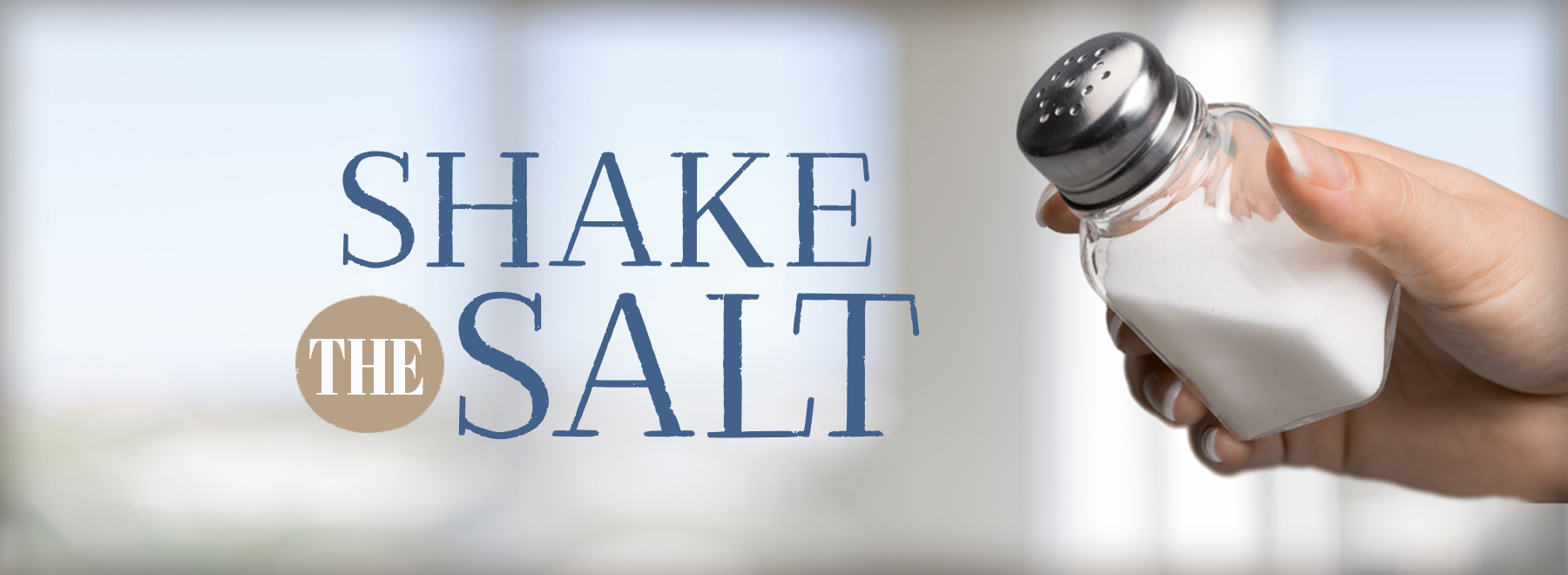Creativity in the kitchen is the best savior from salt
A mere teaspoon of any ingredient might seem a bit chintzy to a master chef, but it’s just the right measure for good health when it comes to Americans’ favorite condiment.
The amount of added salt in mass-produced food – covering everything from canned vegetables to the average fast-food value meal – exceeds what our body needs by an average of more than 50 percent, according to most dietitians.

That teaspoon of salt measures out to about 2,300 milligrams a day, said Dacia Breeden, UMMC outpatient oncology dietitian based at the Jackson Medical Mall. It’s in accordance with proper sodium intake levels in the Dietary Guidelines for Americans for 2020-2025.
“It is estimated that most Americans are taking in about 3,400 milligrams or higher each day,” Breeden said. “That high amount may sound surprising, but if you add up the hidden salt in processed foods and fast foods, it’s very easy to hit the high amount without realizing it, even if you aren’t adding any additional salt from the shaker.”
Leafy salads are always a healthy choice, but be careful with the toppings, experts warn. Greens and fruits are low in sodium, but too much ham, bacon, cheese, croutons or even fat-free dressing can pump up the added sodium in the bowl to 1,000 milligrams, Breeden said.
“If you’re watching your sodium intake, you need to keep your restaurant dining to a minimum and pack your own meals to make sure you keep your numbers low,” Breeden said.
As adults wind down their 40s and navigate their 50s and 60s, they come into greater risk for cardiovascular disease and cancer, plus other conditions related to changes in bone and muscle mass. As a result, it’s time to weave in nutrient-dense foods to an everyday diet, according to current guidelines.
Foods that can provide the most vitamins, minerals and other health-promoting components include fruit, vegetables whole grains, baked or grilled seafood, eggs, beans, peas, lentils, unsalted nuts and seeds. Also, lean meats and poultry prepared with as little added sodium, sugar and unsaturated fat fit the bill best for healthy aging, according to guidelines.
Such is the basis of the Dietary Approaches to Stop Hypertension, or “DASH” diet, often recommended by cardiologists, which offers serving suggestions with the goal of cutting down excess sodium intake.

“I typically recommend it as a heart-healthy diet for my patients,” said Dr. Michael McMullan, director of the Division of Cardiovascular Diseases at UMMC. “While this may mean cooking your own meals and staying on the outer rows of the grocery store, it will ultimately lead to better eating habits and a more healthy lifestyle.”
Fortunately, the volume of salt-free substitutes and seasonings available in stores has grown along with Americans’ appetite for sharing photos of their dinner plates on social media.
The most popular salt subs incorporate potassium chloride as its base ingredient instead of sodium chloride. Used in moderation, the concoction can work well, as potassium can help lower blood pressure. Experts say to go lightly on them, however, as heightened levels of potassium can interfere with certain medications for kidney, heart and liver disease or diabetes.
In recent times, monosodium glutamate, or MSG, has been accepted as a flavor enhancer in most circles and has earned a Generally Regarded as Safe, or “GRAS,” designation by the Food and Drug Administration. Used ideally in varying proportions, the substance occurs naturally in many foods and is made up of only one-third of the sodium content as traditional table salt. Experts do advise however, that those with food sensitivities or allergies exercise caution in using it in salt form, versus whole food form.
Changing the color of one’s palette in middle age from salty white to peppery red can be a tasty change, depending on one’s tolerance to anything higher on the Scoville scale than a bell pepper. Mixing pepper powders of varying heat levels with common herbs and spices such as garlic and onion powder can produce quite a useful all-purpose seasoning, Breeden said.
Breeden suggests any variation of this mixture often sold in supermarkets as no-salt seasoning:
- 1/2 cup nutritional yeast (to mimic the taste of parmesan cheese but with a fraction of the sodium)
- 2 tablespoons dried parsley
- 2 tablespoons tomato or carrot powder
- 1 tablespoon granulated garlic
- 1 ½ teaspoons dry ground lemon peel
- 1 teaspoon onion powder
- 1 teaspoon celery seed
- 1 teaspoon paprika
- 1 teaspoon dried basil
- 1 teaspoon dried thyme
- 1 teaspoon marjoram
- ¾ teaspoon mustard powder
The array of herbs, spices and citrus shavings can be blended in a traditional food processor or a spice grinder and stored in an airtight container for up to four months. Other common herbs on store shelves that can be easily “rediscovered” as part of a healthier diet, Breeden said, include dill, sage, coriander, paprika, rosemary and thyme.
As for salad dressings and sauces of all types, it’s best to go the “DIY” route to cut sodium and preservatives in general. Vinegar, particularly the balsamic or apple cider variety, can work as many wonders for a salad as buying one from the store.
“And for sushi lovers, if you love dipping those luscious creations in soy sauce, try coconut aminos instead,” Breeden said. “You can get the same taste effects but without the sky-high sodium content.”
The above article appears in CONSULT, UMMC’s monthly e-newsletter sharing news about cutting-edge clinical and health science education advances and innovative biomedical research at the Medical Center and giving you tips and suggestions on how you and the people you love can live a healthier life. Click here and enter your email address to receive CONSULT free of charge. You may cancel at any time.



